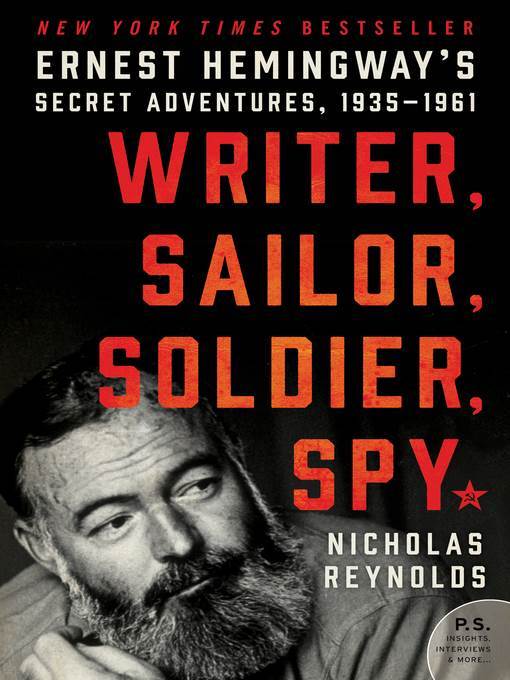
Writer, Sailor, Soldier, Spy
Ernest Hemingway's Secret Adventures, 1935-1961
کتاب های مرتبط
- اطلاعات
- نقد و بررسی
- دیدگاه کاربران
نقد و بررسی

January 9, 2017
This thoroughly researched exploration of Hemingway’s military adventurism fails to deliver a convincing conclusion. Reynolds gamely connects the author’s interactions with Soviet operatives in the Spanish Civil War to his fears of persecution during the post-WWII American Red Scare. He also documents Hemingway’s contact with the NKVD Soviet spy agency, antisubmarine patrol efforts in his fishing boat in Cuban waters, and creation of an amateur counterintelligence operation in Havana in 1942, as interesting sidelines to his creative life. But the author, a military historian, rarely accounts for the role Hemingway’s tremendous ego played as a motivating force. Hemingway’s activities in 1944 postinvasion France did assist in Paris’s liberation, but also prompted a U.S. Army investigation for violating noncombatant status. The book is filled with admissions that “no one is likely to ever know” the extent of Hemingway’s involvement with the Soviets and overly puffed-up martial language, such as describing combat coverage as “rid to the sound of the guns.” In addressing Hemingway’s later years, Reynolds notes that “fantasy and reality mixed in Hemingway’s thoughts and politics,” but doesn’t adequately address how depression, narcissism, and celebrity treatment may have affected the writer’s conduct. In concluding that Hemingway was “a gifted but overconfident amateur” in politics and espionage, Reynolds overstates the toll those pursuits took on the writer.

December 15, 2016
A military historian uncovers evidence of Ernest Hemingway's dabbling in espionage. While working on an exhibition at the CIA Museum, retired Marine Corps and CIA officer Reynolds (U.S. Marines in Iraq, 2003: Basrah, Baghdad and Beyond, 2016) discovered "tantalizing traces" of Hemingway's involvement in the Office of Strategic Services and Russia's NKVD, the precursor of the KGB. Beginning with that tenuous evidence, the author has assembled fragments from FBI and NKVD files, sometimes more suggestive than definitive, to create this mostly engrossing story of Hemingway's disillusionment with American politics, his sympathy with communism, and his attraction to adventure and subversion. Two events changed Hemingway's political perspective: a devastating hurricane in the Florida Keys in 1935, when the government failed to evacuate stranded World War I veterans, "who died by the hundreds"; and the refusal of the U.S. to support the Republicans in the Spanish Civil War. Both made him "passionately pro-Republican and antifascist" and therefore a likely recruit for the NKVD. He seems not to have engaged in much actual spying either for the Soviets or, later, the Americans, to whom he also ferried information. During a trip to China with his wife, Martha Gellhorn, he reported to Washington about "the friction...between the Nationalists and the communists," information that did not come from secret meetings or stolen papers. In 1942, living in Cuba, he headed what he called the "Crook Factory," a motley collection of friends who reported to the American ambassador about any odd behavior among German or Spanish businessmen on the island. Like most of his spying activities, this one was short-lived. In his later years, Hemingway became obsessed with the idea that he was under FBI surveillance, and the author speculates that this delusion "deepened his depression and made his final illness worse." Although Reynolds is forced to guess about much of Hemingway's secret life as a spy, his conclusions seem consistent with the well-known portrait of the novelist striving to prove his manliness and power.
COPYRIGHT(2016) Kirkus Reviews, ALL RIGHTS RESERVED.

November 1, 2016
We've had hints of Ernest Hemingway's cloak-and-dagger activities during World War II, but Reynolds argues they were greater than previously understood. A former CIA officer and curator of the CIA Museum, he details Hemingway's work with both America's pre-CIA OSS and the Soviet Union's pre-KGB NKVD while arguing that Hemingway's late-life writer's block stemmed from wartime experiences that undermined his faith in literature. With a 125,000-copy first printing.
Copyright 2016 Library Journal, LLC Used with permission.

























دیدگاه کاربران